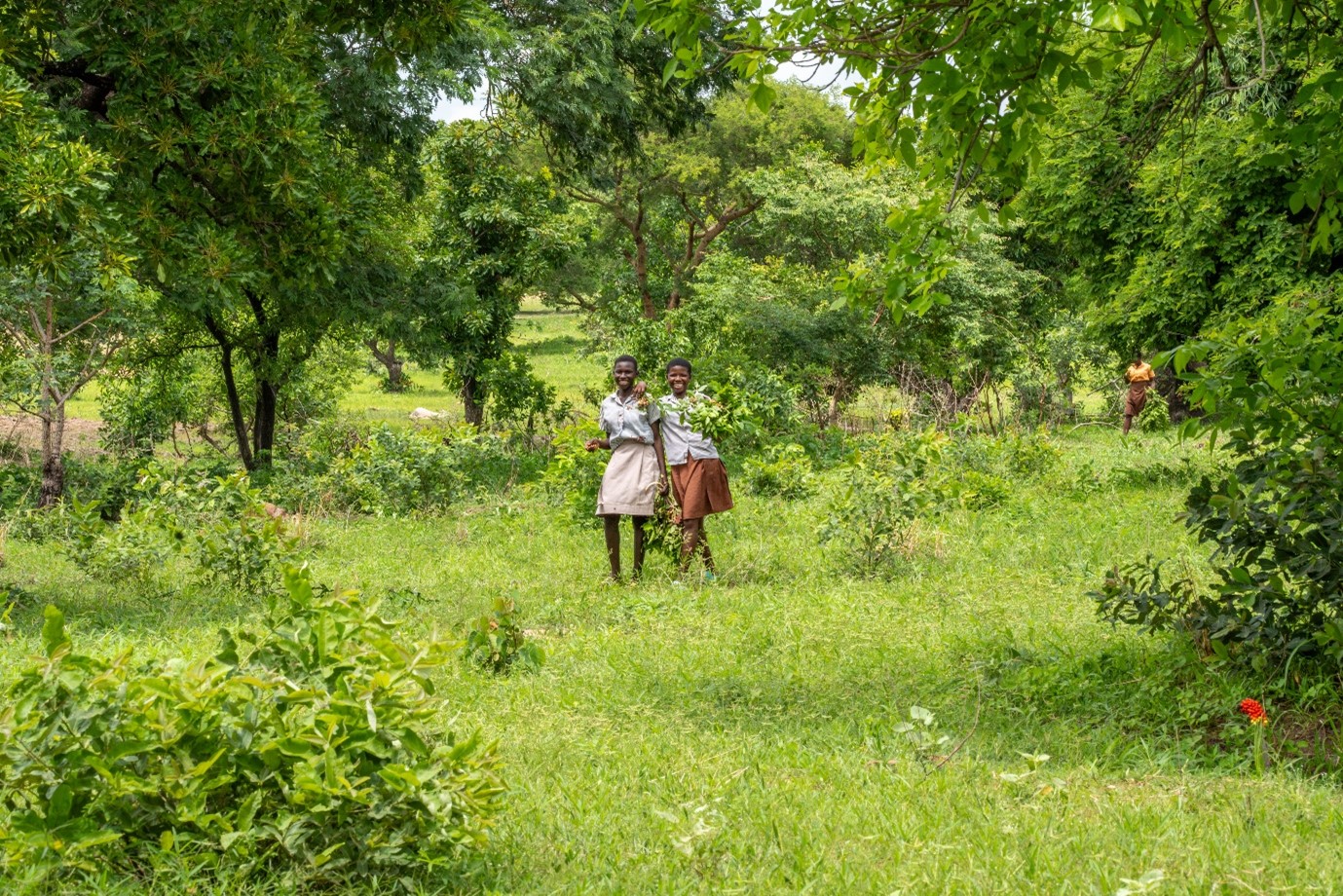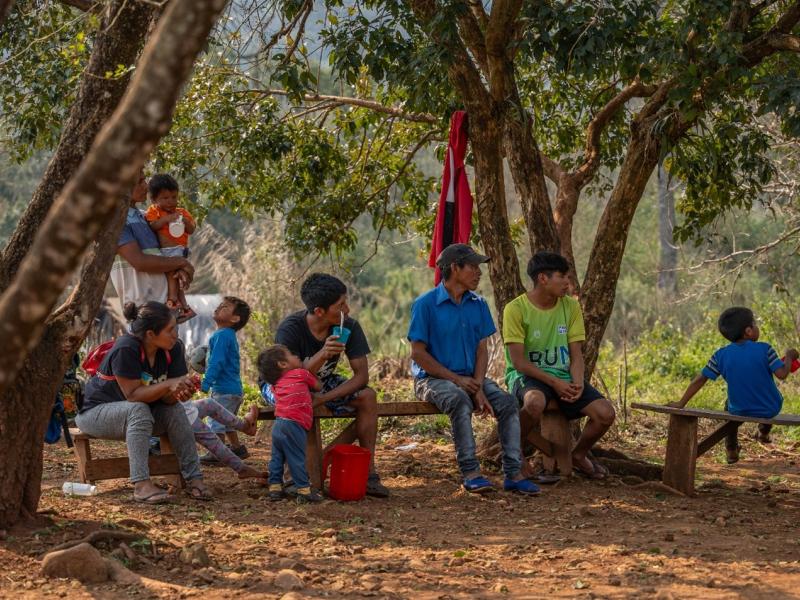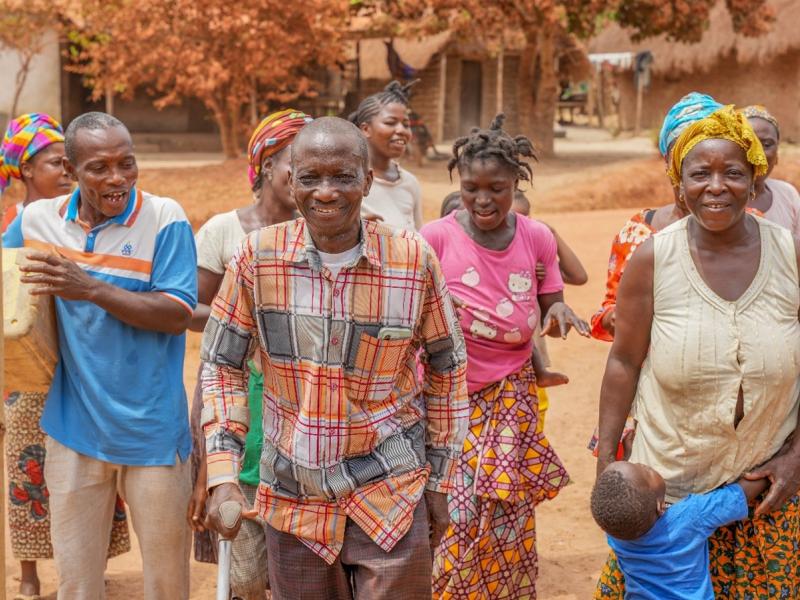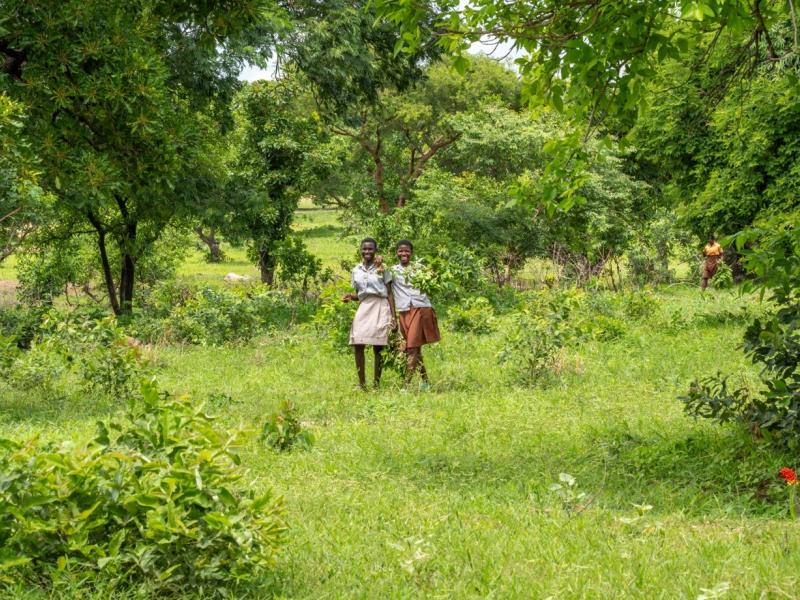In the Upper East Region of Ghana, women like Waida Papara are leading the way in restoring forests, fighting climate change, and building sustainable livelihoods for their communities.
The drylands in northern Ghana stretch wide and open, with the spectacular landscape projecting an impressive vision of gold and green on the horizon. But this is a tough place to farm. Rain falls just a few months a year, and long dry seasons scorch the soil. The once-thriving forests have thinned, cut for firewood or cleared for farming. For the villagers of Katiu, Kayoro, and Basisam, near the Burkina Faso border, these pressures have been felt for generations.
The villages still carry the mark of an earlier time. Along the road to Katiu, shea and dawa dawa trees planted by past generations stand tall as proof that even in harsh conditions, careful planting can change the landscape.
Now, a new generation is stepping up. Through a community-based forestry initiative SMART Agro-Ecosystems led by the Food and Agriculture Organization of the United Nations (FAO) and the local NGO Link Ghana, women and men from these villages are working together to restore their forests and strengthen their future.
At the heart of this movement is Waida Papawu.
A mother and community leader from Katiu, Waida heads a group of 30 community members — 25 women and 5 men — all dedicated to creating a better future, one seedling at a time. She is the president of the Community Resource Management Committee (CRMC) under the region’s Conservation Resource Management Area (CREMA).
"We started with just a few seedlings," Waida said. "Now we have thousands — dawa dawa, shea, and more. We are growing our own future."
The group meets regularly to take decisions together, ensuring that both women and men have an equal voice. Discussions are open, and every member is encouraged to contribute ideas, whether about planting schedules, seedling care, or managing resources. Their main focus is on planting native species such as shea, dawa dawa, moringa, and mango.
Shea trees provide nuts used for butter production, an important source of income and nutrition. Dawa dawa (Parkia biglobosa), a native species to West Africa, produces seeds that are fermented into a popular local seasoning rich in protein. Moringa is valued for its highly nutritious leaves, and mango trees offer fruit and shade. Together, these species help rebuild soil health, support biodiversity, and make the landscape more resilient to drought.
"We noticed that it had become very hard to find shea or dawa dawa trees,” Waida said. “That’s why we decided to act — so our children and grandchildren will still have them."
Protecting forests, building livelihoods
The initiative’s benefits are more than just trees. Supported by FAO and Link Ghana, and working across 69,000 hectares of semi-arid savanna, the project supports these remote communities in other ways:
- Sustainable beekeeping: Traditionally, honey hunters would burn trees to extract wild honey, often causing devastating bushfires and loss of forest cover. Today, communities are trained to build their own hives, using smokers and protective suits to harvest honey safely. This shift protects trees, reduces the risk of forest fires, and improves the quality of honey, making it safer to consume and easier to sell. The communities are also learning how to make and sell beeswax products and skincare products, expanding their sources of income.
- Eco-guards and forest protection: Trained local eco-guards patrol the new forest reserves, monitor illegal activities, and help prevent fires, backed by local by-laws developed through the project. Presence has strengthened community efforts to protect the land, with reports of fewer incidents of illegal logging and uncontrolled fires.
The results are apparent. Communities are noticing wildfires are fewer, forest patches are recovering. They also hope that rivers that used to dry up early will soon start to flow longer into the dry season.
In villages like Kayoro, older residents recall how past generations planted trees along the roads to provide shade, fruit, and cooler air. Today's efforts are seen as a continuation of that tradition. As Waida talks about planting trees, caring for the land, and building a better future for the children growing up around her, she is balancing her young daughter on her hip. The communities’ efforts are tied to the hopes of the next generation.
Facing challenges for economic growth
The road toward sustainable forest management hasn’t been easy. Water scarcity remains a daily struggle — so to keep young seedlings alive, women often walk long distances to fetch water. Some seedlings have been lost to drought. The remoteness of the villages and transport challenges sometimes slows progress. But the communities remain determined because beyond the environmental benefits, the project is building real economic opportunities. Seedlings are sold locally. Shea trees mature into a source of shea nuts for butter production — a highly valued commodity both for home use and for sale. Honey and wax products increase incomes for families.
Energy-saving cookstoves, also introduced through the project, help reduce firewood use, easing pressure on forests and saving families time and effort.
And as the forests regrow, so does the hope for nature-based tourism. The famous crocodile pond near the village of Paga, a sacred site where crocodiles and humans coexist peacefully, is not far. Traditionally, visitors come to see the crocodiles up close and learn about the local customs and history. Reviving the surrounding landscapes could not only protect this cultural landmark but also attract more visitors, bringing new opportunities for eco-tourism and local income.
Growing stronger together: Building forests and connections across borders
Across these communities, with more than 250 direct beneficiaries, the SMART Agro-Ecosystems initiative is showing real results in restoring degraded lands, improving livelihoods, and strengthening local economies.
Located near the Burkina Faso border, these villages are closely tied to neighboring communities, with many families sharing relatives across both sides. Community members have expressed a strong desire to deepen collaboration, exchanging experiences and forest management practices with their fellow villagers just across the border, so that knowledge and sustainable practices can grow together
***
This initiative is part of the five-year project “Global Transformation of Forests for People and Climate: A Focus on West Africa”, jointly implemented by the Swedish International Development Cooperation Agency (Sida), the Food and Agriculture Organization of the United Nations (FAO), and the Economic Community of West African States (ECOWAS).
The results and lessons learned from this initiative will be presented at the global South–South knowledge exchange, “South–South Knowledge Exchange on Community-Based Forestry: From West Africa to the World,” taking place in Cabo Verde from 26 to 29 May and co-funded by Sida and the UN-REDD Programme.



